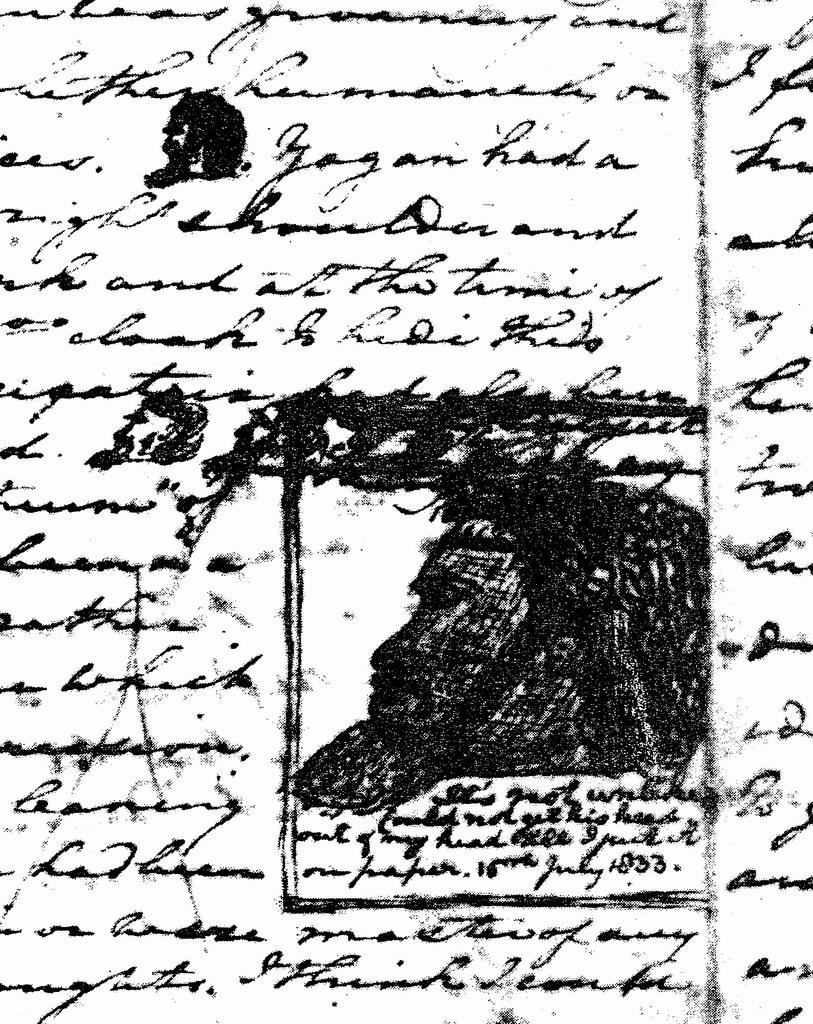|
A deal was struck and for a time there was harmony between the settlers and Aborigines. The truce was broken by some twit from Tasmania who opened fire
(completely unprovoked) on a group of Aborigines killing or wounding all of them.
The inevitable followed with Yagan, his father and a group of about 50 other male members of the tribe going after and spearing settlers in retaliation.
Yagan's activities were such that he became known as the 'Wallace' of the Aborigines - a reference to William Wallace the Scot depicted in Mel Gibson's
Brave heart.
Midgigeroo and Munday were also declared outlaws. Midgigeroo was captured by Captain Ellis, tried for at least 4 killings and was then summarily shot.
Word of his execution was kept from Yagan's ears, the authorities knowing what sort of reaction they could expect if Yagan found out.
In one confrontation with a settler ( G.F. Moore) Yagan is reputed to have said words to the effect of:
'You come to our country; you have driven us from our haunts and disturbed us from our occupations. As we walk in our own country we are fired upon by
white men. Why should the white men treat us so?'
Moore later wrote of the incident:
'The truth is everyone wishes him taken but no-one likes to be his captor. There is something in his daring that one is forced to admire.'
Yagan had threatened to kill three whites if his father was executed and when he finally discovered the truth he set about fulfilling his threat.
Within a week two soldiers had been killed but settlers (who Yagan still trusted and visited) tried to persuade him to stop the killings.
On July 11th 1833 Yagan met his fate at the hands of William and James Keates.
There are two different stories about how this came about:
Story One:
The brothers had often hunted with Yagan in the past and on this occasion after the hunt was over and Yagan was asleep, William crept forward and shot
Yagan in the head. The other Aborigines present immediately sprang to Yagan's aid, spearing the older brother while James made his escape.
Story Two: Related by A. Hasluck.
'Yagan refused to go any further with the Keates, who, if they tried to persuade him to go on, doubtless had the 30 pound reward in mind, and when
he became threatening and began to raise his spear, William Keates cocked his gun and shot him, while James shot Keegan, another native, who was throwing
his spear. James then ran for his life down to the river where he plunged in out of sight, and turned to see four natives driving their spears into his brother.'
Yagan's head was cut off, smoked to preserve it and later sent to a museum in England. (It was returned much later in 1997). A statue of Yagan was erected on
Heirisson Island but for some strange reason the head was removed on a number of occasions. Possibly as a rather sick joke by someone who was aware of the story.
The circumstances were such that it led the Perth Gazette to write that the death of Yagan was 'a wild and treacherous act and that by this act the whites had
taught the native to exercise towards them deceit and treachery which in him had been the subject of daily reproof.'
Moyran (Yagan's mother) now incited more revenge attacks and stock was speared, crops burned and even outbuildings on farms set alight.
Yagan's fight has been lauded by some historians as that of a patriot fighting for his land and people. His actions do not back up these claims as he did not
unite the tribes or conduct any organised resistance as Jandamarra would do much later. Yagan's fight seems to have been much more about taking from the
settlers what he believed was his right and vengeance for those close to him who were killed.
|



